- Home
- Jane Yolen
My Brothers' Flying Machine
My Brothers' Flying Machine Read online
Many thanks to Elizabeth Fitzgibbons, Laura Fitzgibbons,
George & John Hart, Pauly & John Hart, Anna Zieliuska,
Steve Wobido, Dexter Buell, Satchmo Hawley
(dog model), Chris & Tera Hawley, Robert Filiuta,
Bert Robinson, and Russ Foster.
A special and sincere thank you to Maria Modugno for
envisioning such a wonderful and grand project.
—J.B.
Copyright
Text copyright © 2003 by Jane Yolen
Illustrations copyright © 2003 by Jim Burke
All rights reserved. Except as permitted under the U.S. Copyright Act of 1976, no part of this publication may be reproduced, distributed, or transmitted in any form or by any means, or stored in a database or retrieval system, without the prior written permission of the publisher.
Little, Brown and Company
Hachette Book Group
237 Park Avenue
New York, NY 10017
Visit our website at www.HachetteBookGroup.com
www.twitter.com/littlebrown
First eBook Edition: November 2009
ISBN: 978-0-316-09257-9
For the Pod
—J.Y.
This book is dedicated to my brother and three sisters:
Sean, Patty, Sarah, and Kaitlin. I love you.
—J.B.
Contents
Copyright
Begin reading
A Note from the Author
“When the world speaks of the Wrights, it must include our sister.
Muck of our effort has been inspired by her.”
—Orville Wright
I was four years old when
Papa brought home a little flying machine.
He tossed it into the air
right in front of Orv and Will.
They leaped up to catch it.
“Is it a bat?” Orv asked.
Or maybe it was Will.
When at last the “bat” fell to the floor,
they gathered it up
like some sultan’s treasure,
marveling at its paper wings,
admiring the twisted rubber band
that gave it power.
I wanted to touch it, too,
but they would not let me,
saying I was too little,
though I was but three years younger
than Orv, to the very day.
When the “bat” broke, they fixed it together,
Will directing Orv—with his busy hands—
tinkering till the toy worked better
than when Papa first brought it home.
Our older brothers, Reuchlin and Lorin,
looked down on such childish activity,
but Will was not put off.
He made one,
and two,
and three more “bats,”
each one bigger than the last.
Orv was his constant helper.
I stood on tiptoe by the table,
watching them work.
Will shook his head.
“On a much larger scale,” he said,
“the machine fails to work so well.”
They were both puzzled.
They did not know yet
that a machine twice as big
needs eight times the power to fly.
After that, Will built sturdy kites,
which he sold to his pals in school.
Orv made a printing press,
with an old tombstone for a press bed,
wheels and cogs from a junkyard,
and the folding top of my old baby buggy
that he had found out in the barn.
My, it made me smile to see it.
Papa and Mama applauded their efforts.
Orv’s press could print a thousand pages an hour.
A printer from the great city of Denver
came to visit and climbed under and over
Orv’s baby-buggy press.
At last he laughed, amazed.
“Well, it works,” he said,
“but I certainly don’t see how.”
Orv and Will made many messes,
but Mama never complained.
She’d always been the one
who gave them a hand building things
when they were boys.
Poor Papa. He knew God’s word well enough,
but not how to drive a nail.
When dear Mama died of tuberculosis,
I took over her role:
keeping the house, making the meals,
and always giving the boys applause,
even after I graduated from college
and worked as a teacher.
Will and Orv never went on in school.
They ran a print shop, then a bicycle shop,
repairing and making custom-built models
they called the Van Cleve and the St. Clair.
Theirs was not the biggest bicycle shop in Dayton,
but I like to think it was the best.
Will and Orv. Orv and Will.
They worked side by side
in the bicycle shop,
whistling at the same time,
humming the same tune.
They even—so Will said—thought together.
Some folks mistook them for twins,
though they looked nothing alike.
Will had a hawk’s face,
and Orv a red mustache.
Orv was the neat one.
He wore special cuffs for his sleeves
and a blue-and-white-striped apron
to protect his clothes.
But Will—land’s sake, he was a mess.
I had to remind him when his suit needed pressing
and when his socks did not match,
or find him one of Orv’s shirts
when he was ready to go off to give a speech.
The newspapers and magazines
were full of stories about people trying to fly.
Lilienthal, Pilcher, Chanute,
MEN INTO BIRDS, the headlines read.
I wondered if such a thing were really possible.
Orv said: “Insects, birds, and mammals
fly every day at pleasure,
it is reasonable to suppose that man might also fly.”
Will wrote off to the Smithsonian
for all their books and pamphlets on flight.
He and Orv studied page after page.
The first question they asked was:
How can we control the flight?
They knew that a bicycle is unstable by itself,
yet it can be controlled by a rider.
How much more control would an aeroplane need?
Overhead, buzzards wheeled in the sky,
constantly changing the position of their wings
to catch the flow of air.
“If birds can do it,” Orv mused out loud, “so can men.”
He seemed so certain,
I began to believe it could be done.
I began to believe it could be done
by Will and Orv.
They built their first aircraft
right in the bicycle shop.
I took over running the place,
as Mama would have,
so they might make their flying machine.
That first aircraft’s wings
spanned a full five feet.
I measured it out myself.
The craft was of pinewood
covered with fabric
and sealed with shellac.
Like a kite, it was controlled
by a set of cords.
&n
bsp; When it was finished,
Orv and I went off on a camping trip
with a group of friends.
While we were gone, Will did a sneak.
He marched out to a nearby field
and he flew the glider,
watched only by some boys.
The thing suddenly swooped down on them.
The boys ate dust that day, I’ll tell you.
Their first aircraft was a big kite.
But a kite is not an aeroplane.
So Will and Orv set about to build it bigger—
sixteen or seventeen feet,
large enough to carry a man
but still open to all the elements.
Will lay facedown on the lower wing,
showing me how he planned to fly.
I tried to imagine the wind in his face,
the dirt and grass rushing up to greet him
like an old bore at a party.
“Is it safe?” I whispered.
He winked at me, smiled, and said,
“If you are looking for perfect safety,
sit on the fence and watch the birds.”
Dayton, Ohio, where we lived,
was not the place to fly the craft.
Will and Orv needed somewhere
with open spaces and strong, regular breezes.
They thought about San Diego,
about St. James, Florida,
about the coasts of South Carolina and Georgia.
At last they settled on Kitty Hawk
on the Outer Banks,
a two-hundred-mile strip of sand
with the ocean at its face
and North Carolina at its back.
Will called it “a safe place for practice.”
Only sand and hearty breezes.
Only sun and a moon so bright
Orv could read his watch all hours.
I kept the store.
Will and Orv kept the sky.
Weeks, months went by in practice.
The boys sent me letters almost every day
so that I might follow their every move.
When they were home,
I was in their closest confidence.
At Kitty Hawk they flew the aircraft
with a man—and without one—
but always controlled the craft from the ground.
We had thought: Stand on the shoulders of giants,
and you are already high above the ground,
but success did not come as quickly as we hoped.
Finally Will made a big decision:
“We cast the calculations of others aside.”
Back in Dayton they would start anew.
This time when they left Kitty Hawk for home,
when they left the wind, the sand,
the mosquitoes that left lumps like hen’s eggs,
they came home with a new idea.
Now they worked dawn to dusk,
so absorbed in what they were doing,
they could hardly wait
for morning to come to begin again.
They built a small wind tunnel
out of an old starch box
and used a fan to make the wind.
Then they built a larger tunnel.
They learned about lift and drag.
They tried out many different kinds of wings.
And three years, almost to the day,
after Will had written to the Smithsonian,
they were ready for powered flight.
They built the Flyer,
with a wingspan of just over forty feet.
Our friend Charlie Taylor made
a twelve-horsepower engine for the Flyer,
a motor both light and powerful.
Gasoline was gravity-fed into the engine
from a small tank just below the upper wing.
The Flyer was so big—
over six hundred pounds of aeroplane
it could not be assembled whole in our shop.
Back to Kitty Hawk they went
at the tag end of September 1903,
carrying crates filled with aircraft parts.
It took weeks to put the Flyer together,
weeks more to prepare for the flight.
Winter came blustering in early.
It was cold in camp,
each morning the washbasin was frozen solid,
so they wrote in their letters.
They kept fiddling,
tinkering, changing things.
Finally, on December 14, they were ready.
They flipped a coin to see who would be pilot.
Will won, grinned, climbed into the hip cradle,
and off the Flyer went,
rattling down the sixty-foot starting track,
then sailing fifteen feet into the air,
where it stalled,
crashed.
But they were encouraged nonetheless.
The telegram they sent to Papa and me read:
Rudder only injured.
Success assured.
Keep quiet.
On December 17, a cold and windy day,
the Flyer repaired and ready,
they decided to try again.
Hoisting a red flag to the top of a pole,
they signaled the lifesaving station for witnesses.
Four men and a teenage boy appeared.
The men helped them get the Flyer
onto the starting track.
Orv lay down on the lower wing,
his hips in the padded cradle.
Will shook Orv’s hand.
“Now you men,” Will called out,
“laugh and holler and clap
and try to cheer my brother.”
The motor began:
Cough, cough, chug-a-chug-a-chug.
Orv released the wire
that held the plane to the track.
Then the plane raced forward
into the strong wind
and into history.
The boys sent a telegram home to Papa and me.
After that, the world was never the same.
Many men went into the air.
Women, too.
I was not the first woman to fly.
That honor went to the wife
of one of our sponsors,
Mrs. Hart O. Berg, with a rope around her skirt
to keep it from blowing about
and showing her legs.
She flew for two minutes and seven seconds,
sitting stiffly upright next to Will.
A Parisian dressmaker who watched the flight
invented the hobble skirt,
which for a short time was quite smart.
Such is fashion.
But how I laughed when I had my turn at last,
flying at Pau in France on February 15, 1909.
Will took his seat beside me.
Orv waved from the ground.
The plane took off into the cold blue.
Wind scoured my face
till my cheeks turned bright red.
Then I opened my arms wide,
welcoming all the sky before me.
A Note from the Author
The Wrights were a close-knit family, but closest of all were Wilbur, Orville, and Katharine. Both brothers credited Katharine with having a hand in their success. So it is fascinating to note that she did not get to fly until almost six years after that first flight.
All the incidents in this picture book have been documented in such volumes as Peter L. Jakab’s Visions of a Flying Machine: The Wright Brothers and the Process of Invention, published by the Smithsonian; Russell Freedman’s The Wright Brothers: How They Invented the Airplane (Holiday House); Tom D. Crouch’s The Bishop’s Boys: A Life of Wilbur and Orville Wright (W.W. Norton) and many others. Anything said by either of the Wright brothers or Katharine in this picture book, with the exception of “Is it a bat?” comes from letters, articles, interviews, o
r diary entries.
I am not alone in my admiration for Katharine. In 1981, the Gates Learjet Corporation established the Katharine Wright Memorial Award to be given annually to a woman who, behind the scenes, provides encouragement, support, and inspiration to her husband in the aeronautics industry or to a woman who has made a personal contribution to the advancement of the art, sport, and science of aviation and space flight over an extended period of time.
—J.Y.
When Wilbur and Orville’s father brought home a small flying toy, the brothers played with it until it broke. That toy was the beginning of a remarkable collaboration that would culminate in the successful flight at Kitty Hawk.
Orville and Wilbur’s sister, Katharine, was an important part of this team. While social conventions kept her close to home, she became involved in her brothers’ bicycle shop, their printing press, and their numerous other inventions and projects.
Here is the story of the Wright brothers, as told by Katharine in Jane Yolen’s lyrical prose. Detailed paintings by the award-winning Jim Burke show the complexity of the Wright family’s achievements, and the stunning panoramas celebrate their triumph.
Photo by Jason Stemple
JANE YOLEN is the award-winning author of more than 200 books, including Child of Faerie, Child of Earth, illustrated by Jane Dyer, and Letting Swift River Go, illustrated by Caldecott winner Barbara Cooney. Jane Yolen and her husband divide their time between a farmhouse in Massachusetts and a house in Scotland. Her Web site is www.janeyolen.com.
Photo by Suzanne Elder
JIM BURKE, a Manchester, New Hampshire, native, earned his BFA from Syracuse University’s School of Visual and Performing Arts in 1996. He has garnered many awards, including a gold medal from the prestigious New York Society of Illustrators, and awards of excellence from Communication Arts, Print Regional Design, Step-by-Step Graphics, the New York Art Directors Club, and the Los Angeles Society of Illustrators. This is Jim’s first children’s picture book. He currently lives in New York City.
“Told in free verse, the narrative focuses on Will and Orville [Wright] and their achievements, but underlying all that is Yolen’s quiet appreciation of the women who believed in their dream…. Burke’s beautifully composed, full page-illustrations suit the tone of the text with their quiet dignity.”—Booklist. Starred review

 The Pictish Child
The Pictish Child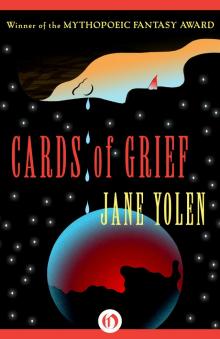 Cards of Grief
Cards of Grief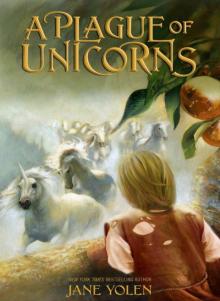 A Plague of Unicorns
A Plague of Unicorns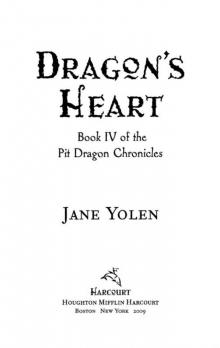 Heart's Blood
Heart's Blood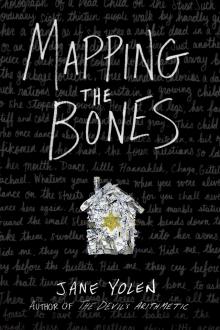 Mapping the Bones
Mapping the Bones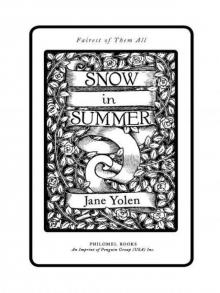 Snow in Summer
Snow in Summer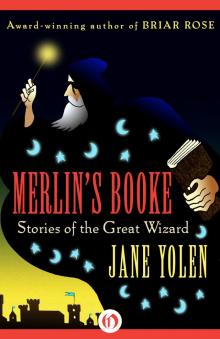 Merlin's Booke: Stories of the Great Wizard
Merlin's Booke: Stories of the Great Wizard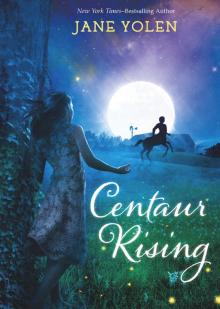 Centaur Rising
Centaur Rising The One-Armed Queen
The One-Armed Queen Dragon's Blood
Dragon's Blood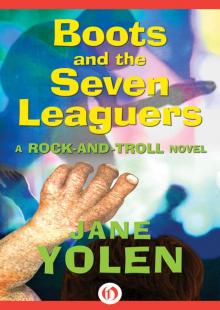 Boots and the Seven Leaguers
Boots and the Seven Leaguers The Girl Who Cried Flowers and Other Tales
The Girl Who Cried Flowers and Other Tales The Wizard of Washington Square
The Wizard of Washington Square Tales of Wonder
Tales of Wonder The Emerald Circus
The Emerald Circus Sister Light, Sister Dark
Sister Light, Sister Dark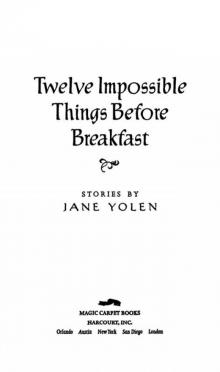 Twelve Impossible Things Before Breakfast
Twelve Impossible Things Before Breakfast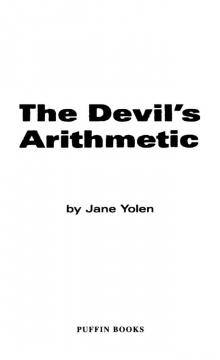 The Devil's Arithmetic
The Devil's Arithmetic Trash Mountain
Trash Mountain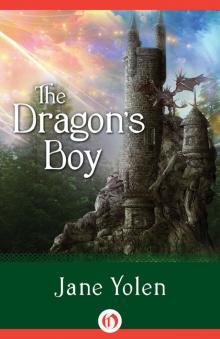 The Dragon's Boy
The Dragon's Boy A Sending of Dragons
A Sending of Dragons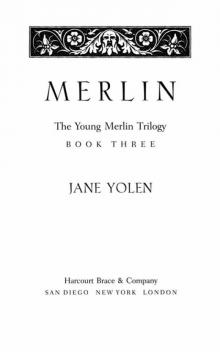 The Young Merlin Trilogy
The Young Merlin Trilogy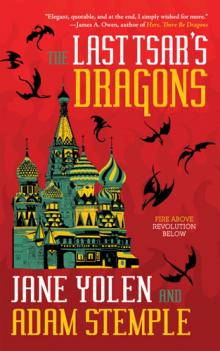 The Last Tsar's Dragons
The Last Tsar's Dragons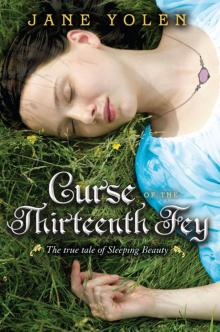 Curse of the Thirteenth Fey: The True Tale of Sleeping Beauty
Curse of the Thirteenth Fey: The True Tale of Sleeping Beauty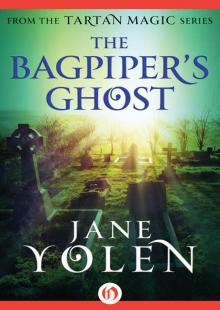 The Bagpiper's Ghost
The Bagpiper's Ghost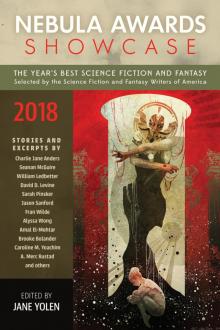 Nebula Awards Showcase 2018
Nebula Awards Showcase 2018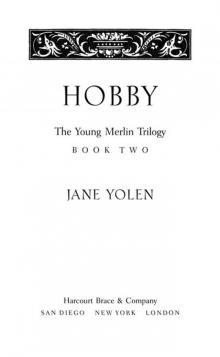 Hobby
Hobby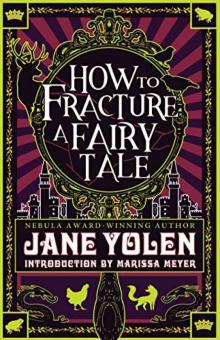 How to Fracture a Fairy Tale: 2
How to Fracture a Fairy Tale: 2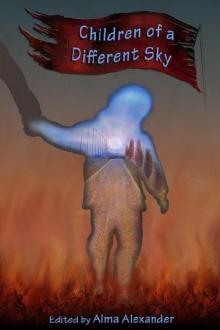 Children of a Different Sky
Children of a Different Sky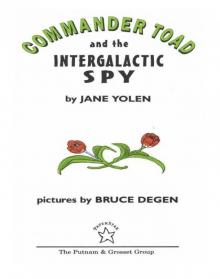 Commander Toad and the Intergalactic Spy
Commander Toad and the Intergalactic Spy Wizard’s Hall
Wizard’s Hall The Transfigured Hart
The Transfigured Hart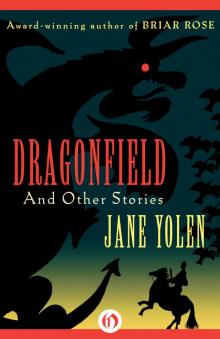 Dragonfield: And Other Stories
Dragonfield: And Other Stories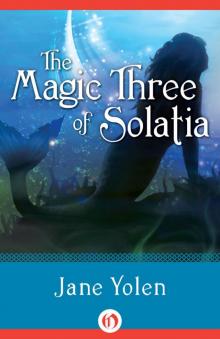 The Magic Three of Solatia
The Magic Three of Solatia The Great Alta Saga Omnibus
The Great Alta Saga Omnibus Favorite Folktales From Around the World
Favorite Folktales From Around the World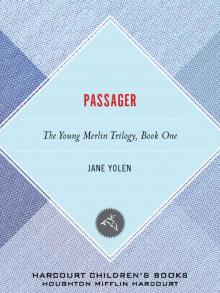 Passager
Passager The Wizard's Map
The Wizard's Map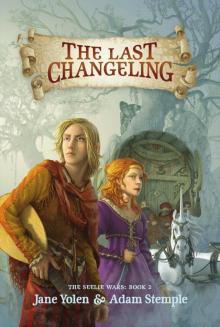 The Last Changeling
The Last Changeling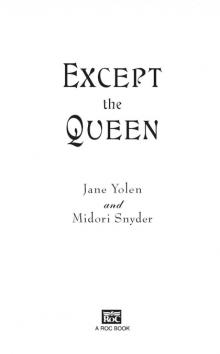 Except the Queen
Except the Queen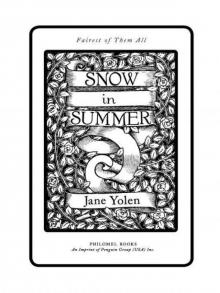 Snow in Summer: Fairest of Them All: Fairest of Them All
Snow in Summer: Fairest of Them All: Fairest of Them All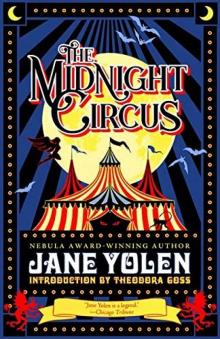 The Midnight Circus
The Midnight Circus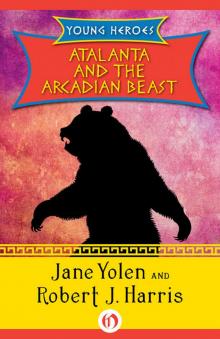 Atalanta and the Arcadian Beast
Atalanta and the Arcadian Beast Finding Baba Yaga
Finding Baba Yaga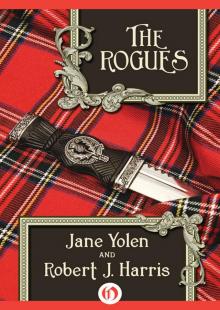 The Rogues
The Rogues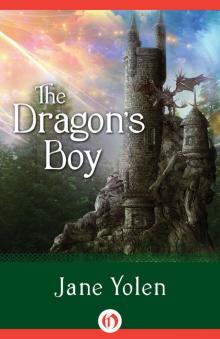 Dragon's Boy
Dragon's Boy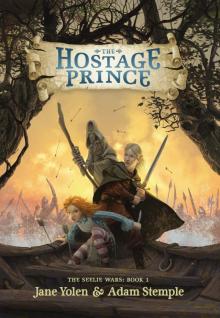 The Hostage Prince
The Hostage Prince Wizard of Washington Square
Wizard of Washington Square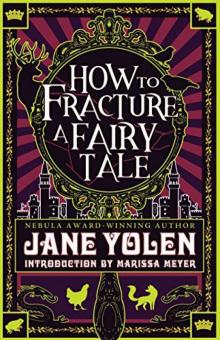 How to Fracture a Fairy Tale
How to Fracture a Fairy Tale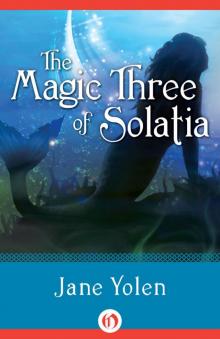 Magic Three of Solatia
Magic Three of Solatia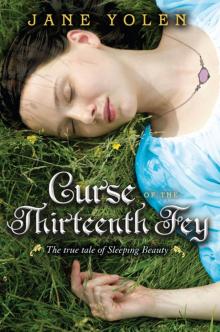 Curse of the Thirteenth Fey
Curse of the Thirteenth Fey My Brothers' Flying Machine
My Brothers' Flying Machine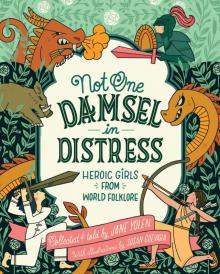 Not One Damsel in Distress
Not One Damsel in Distress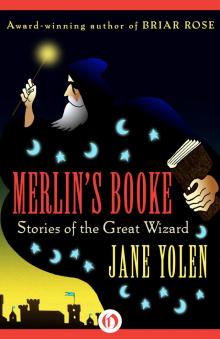 Merlin's Booke
Merlin's Booke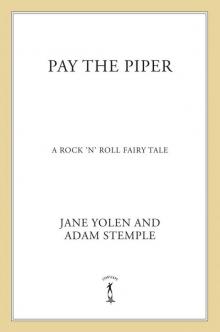 Pay the Piper: A Rock 'n' Roll Fairy Tale
Pay the Piper: A Rock 'n' Roll Fairy Tale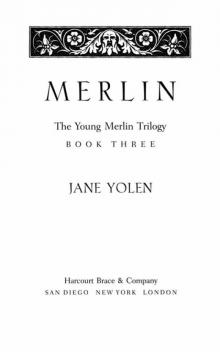 Merlin
Merlin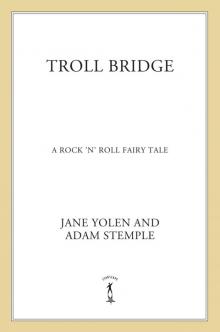 Troll Bridge
Troll Bridge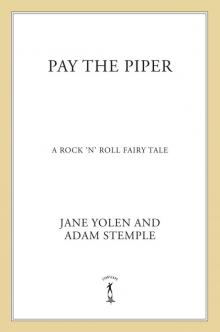 Pay the Piper
Pay the Piper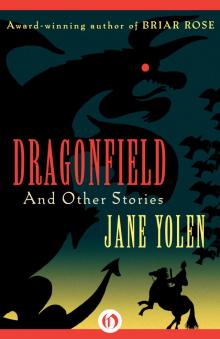 Dragonfield
Dragonfield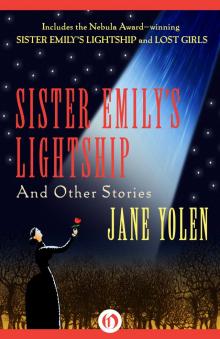 Sister Emily's Lightship
Sister Emily's Lightship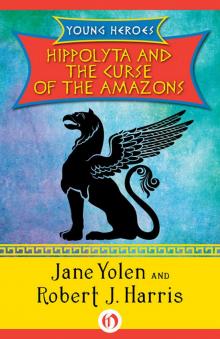 Hippolyta and the Curse of the Amazons
Hippolyta and the Curse of the Amazons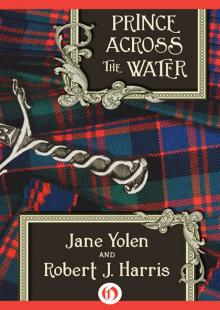 Prince Across the Water
Prince Across the Water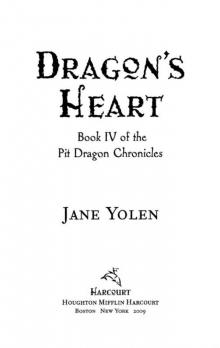 Dragon's Heart
Dragon's Heart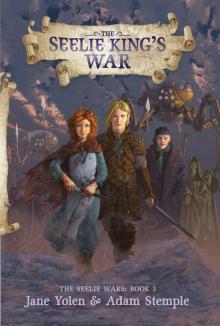 The Seelie King's War
The Seelie King's War Among Angels
Among Angels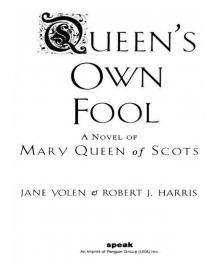 Queen's Own Fool
Queen's Own Fool